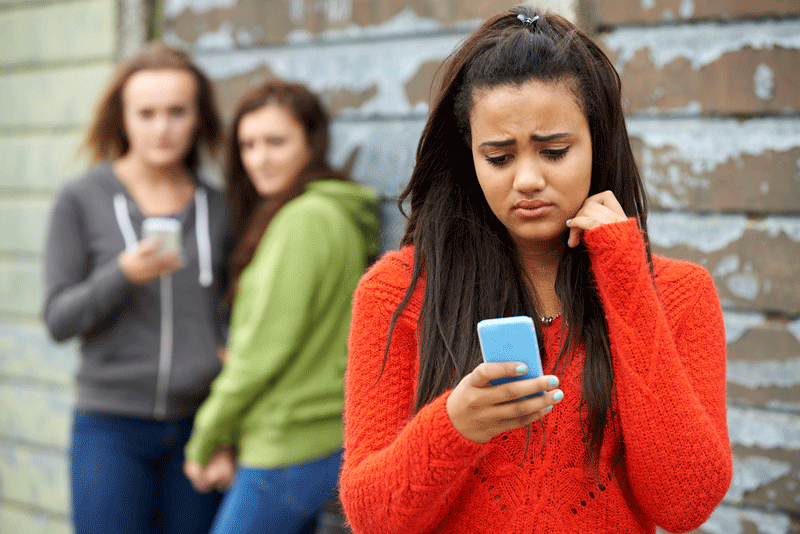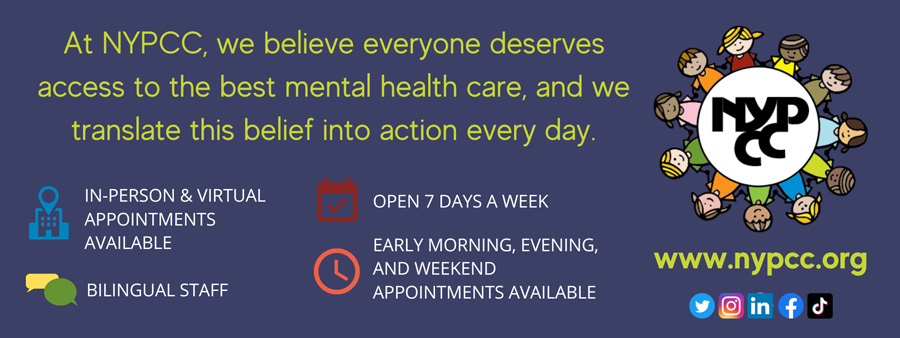While bullying is an act of intentional aggression carried out repeatedly over time and occurring within a relationship characterized by an imbalance of power (Center for the Study and Prevention of Violence, 2008), cyberbullying is threatening or hurtful messages or images being sent using an electronic device (e.g., cell phone, computer). Because it is often done indirectly or anonymously, cyberbullying is less visible to external parties and often difficult for adults to detect and address such behavior (Nansel et al., 2001). The challenge for parents is to know when their child is being cyberbullied and what to look out for.

Cyberbullying is a type of bullying that takes place over digital devices like cell phones, computers, and tablets. Cyberbullying can occur through SMS, Text, and apps, or online in social media, forums, or gaming where people can view, participate in, or share content. Cyberbullying includes sending, posting, or sharing negative, harmful, false, or personal/private information content about someone else, causing embarrassment or humiliation. Some cyberbullying crosses the line into unlawful or criminal behavior (stopbullying.gov).
Those who are cyberbullied are also likely to be bullied offline (Hamm, Newton, & Chisholm, 2015). Cyberbullying can result in serious emotional problems for victims, including depression, anger, and sadness. Those who are targeted by cyberbullying also reveal that they are often afraid or embarrassed to go to school. Research shows long-term consequences that include lower self-esteem, poor academic achievement, and poor psychosocial adjustment as adults. Victims of bullying report more severe anxiety symptoms than others, including social anxiety, depression, low self-esteem, and suicidal ideation (Shetgiri R., 2013).
Because cyberbullying can occur anonymously, cyberbullies can act more aggressively as they assume there will be no consequences. In face-to-face bullying, the bully can view the impact as the attack happens, whereas cyberbullies cannot see any of the immediate outcomes, often resulting in further aggression (Kowalski, Giumetti, Schroeder, & Lattanner, 2014). Motivations behind cyberbullying include a lack of confidence or desire to feel better about themselves, a desire for control, finding it entertaining, and retaliation (Hamm, Newton, & Chisholm, 2015). Those who cyberbully are more likely to have anxiety, depression, less life satisfaction, less self-esteem, and face drug and alcohol abuse (Kowalski, Giumetti, Schroeder, & Lattanner, 2014).
Signs of Cyberbullying
Some youth may be too embarrassed or ashamed to talk to their parents if they are being cyberbullied, and parents may not always recognize when it’s happening to their child. However, one should be mindful of the following warning signs (Stop Bullying, 2021).
- Watch out for increases or decreases in device use, including texting.
- Your child exhibits hyper-emotional responses (laughter, anger, upset) to what is happening on their device, hides their screen or device when others are near, and avoids discussion about what they are doing.
- Social media accounts are shut down, or new ones appear.
- Your child starts to avoid social situations, even those that were enjoyed in the past, or becomes withdrawn or depressed, and loses interest in people and activities, especially if you see declining grades, loss of interest in schoolwork, or not wanting to go to school.
What Can Parents Do
The digital world is constantly evolving with new social media platforms, apps, and devices, and children and teens are often the first to use them. As a parent, you want to be proactive rather than reactive to ensure that your child is safe by keeping the lines of communication open and listening to their concerns. We can start by talking about what cyberbullying is and how to stand up to it safely (Understood.org, 2025). Dedicate time to understand what devices, apps, and technology your child is using. Work with them to decide who can see their profile, send direct messages, or comment on their posts by adjusting the account privacy settings. Keep technology out of your child’s bedroom where it can be used without supervision, and use a cell phone contract to help manage your child’s technology use.
If you know your child is experiencing cyberbullying, here are some helpful practices to keep in mind when discussing. Cyberbullies often want to get a reaction; the best response is none – don’t let them know their plans have worked. Sign off the computer to ignore attacks and walk away from it. If they get mean messages, take the person off their buddy or friends list. If the harassment continues, save the evidence. This could be important proof to show parents or teachers if the bullying doesn’t stop (Child Mind, 2025). Just as we child-proof our homes with toddlers, we need to bully-proof their sense of self – what they like is what matters, not what someone else says about them. This prevents the cycle of negative self-talk that can happen in adulthood. We need our children to understand that they don’t have to feel any less because of what someone says or what they think.
When you feel your child needs more intensive interventions, mental health agencies like the New York Psychotherapy and Counseling Center (NYPCC) can support both you and your child. NYPCC has been a pioneer in addressing bullying, establishing the first anti-bullying coalition (ABC) in the Bronx in 2018 to create awareness of the signs of bullying, help children and parents learn strategies to address the problem, and connect families with support resources. 20% of people who have been bullied experience some kind of mental health problems later in life. These can range from Post Traumatic Stress Disorder (PTSD) to inexplicable bouts of anger to a lifetime of feeling inferior to other people (Shetgiri R., 2013). Trained therapists can address feelings of depression, anxiety, or social isolation that may have been caused by cyberbullying and set up a plan that’s right for the family.
Scott Bloom, LCSW, is the Director of Special Projects at the New York Psychotherapy and Counseling Center. He can be reached at SBloom@nypcc.org or (347) 352-1518.
Resources
Steps to Respect – Bullying prevention and friendship development (Committee for Children)
Eyes on Bullying Toolkit: What Can You Do?
Words That Heal: Using Children’s Literature to Prevent Bullying (Antidefamation League)
PACER’s National Bullying Prevention Center
References
American Occupational Therapy Association, Inc, 2013. http://www.aota.org/Practice/Children-Youth/Mental%20Health/School-Mental-Health.aspx
Center for the Study and Prevention of Violence, 2008. An overview of bullying [Fact sheet]. Retrieved from http://www.colorado.edu/cspv/publications/factsheets/safeschools/FS-SC07.pdf
Child Mind, 2025. https://childmind.org/article/help-kids-deal-cyberbullying/
Hamm M. P., Newton, A. S., & Chisholm, A. (2015). Prevalence and effect of cyberbullying on children and young people: A scoping review of social media students. JAMA Pediatrics, 169, 770-777.
Kowalski, R. M., Giumetti, G. W., Schroeder, A. N., & Lattanner, M. R. (2014). Bullying in the Digital Age: A Critical Review and Meta-Analysis of Cyberbullying Research Among Youth. Psychological Bulletin, 140(4), 1073-1137.
Nansel, T. R., Overpeck, M., Pilla, R. S., Ruan, W. J., Simons-Morton, B., & Scheidt, P. (2001). Bullying behaviors among U.S. youth: Prevalence and association with psychosocial adjustment. JAMA, 285, 2094–2100.
Shetgiri R. Bullying and victimization among children. Adv Pediatr. 2013;60(1):33-51. doi: 10.1016/j.yapd.2013.04.004. Epub 2013 Jul 12. PMID: 24007839; PMCID: PMC3766526.
Stop Bullying.gov. 2021. How to Prevent Cyberbullying: A Guide for Parents, Caregivers, and Youth. https://www.stopbullying.gov/cyberbullying/what-is-it
Tzani, Calli. (2018) The Conversation.com. https://theconversation.com/childhood-bullying-can-cause-lifelong-psychological-damage-heres-how-to-spot-the-signs-and-move-on-100288
Understood.org; 2025. https://www.understood.org/en/friends-feelings/child-social-situations/online-activities-social-media/cyberbullying-what-you-need-to-know





